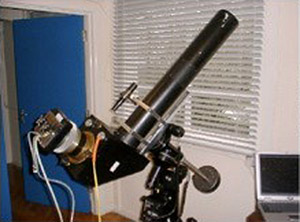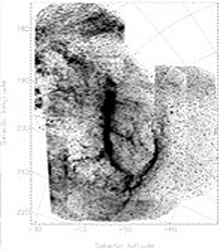The sky at high galactic latitudes is host to a wide range of extensive phenomena that emit faintly in optical lines over a range of excitations. These features remain largely unexplored for the overwhelming majority of the observing programmes of the World’s largest telescopes which have been concentrated on achieving high angular resolution over small fields. First of all, the foreground, very diffuse, line emission from the galactic plane needs accurate evaluation down to resolutions of 1 arcmin to improve the interpretation of the Cosmic Microwave Background (CMB). Then there is the 100 degree long non-thermal radio spur apparently projecting from the Galactic centre. The question still remains as to whether or not this is a nearby supernova remnant or the more dramatic ejection of relativistic particles from the Galactic nucleus into the Galactic halo. Remarkably, no optical identification has yet occurred. In addition, the northern end of the huge HI Magellanic stream, which is certainly partially ionized, is yet to be explored at optical wavelengths although it is expected to emit Hα and [OIII] lines. The complexity of the nearest HII, 30 degree diameter, `bubble’ in Eridanus also needs evaluating with far deeper emission line observations to distinguish between its radiatively ionized and more filamentary, collisionally ionized components. It is the extremely large angular sizes of these phenomena that inhibits their observation.
The proposed project is to design and construct a state-of-the-art, wide-field (~30 degree diameter), narrow-band, optical filter camera – The `Manchester-Athens Wide Field Camera’ (MAWFC). The standalone camera will be the first scientific instrument for astronomy that will be constructed and tested completely in Greece and will conduct a large-area sky survey that will provide maps at less than 1 arcmin resolution, in order to investigate the very extensive, but faint, line emission regions over the whole sky. We will make deep observations of the northern sky in the optical emission lines of Hα, OIII and Hβ, from astronomical sites. The successful outcome will have a significant impact on topical astronomical areas of research e.g. subtracting the foreground for the cosmic microwave background; estimating the electron temperature of the warm ionized gas by comparison with radio data; investigating the giant, high latitude, radio filaments from the Galactic center or very close objects in the Galactic plane of extreme angular extent; detecting the northern end of the LMC/SMC HI stream; investigating the Fermi/WMAP haze/bubbles.
Note that this new camera is a 10 times more sensitive upgrade of a prototype (Fig.1 left), it is an enhanced version of the one used very successfully several years ago (MWFC; Johnson et al. 1978, Boumis et al. 2001, Dickinson 2002).
Fig.1 (right) illustrates successful use of the prototype device where the faint but extremely extensive Eridanus nebulosity has been imaged in the light of Hα (Boumis et al. (2001)).
 |
 |
Fig.1 Left: Photo of the prototype Manchester Wide-Field Camera, being tested in the lab (circa 2001). The original design was large and bulky. The Apogee Ap7-p CCD was not entirely adequate (pixels too large, array too small, dark current too high and filters only 50 mm diam.).
Fig.1 Right: Deep, mosaic Hα image of the high Galactic latitude Eridanus shells, made with this early version of the camera. Note the large field-of-view of the image (coordinates are in degrees; Boumis et al. 2001)
